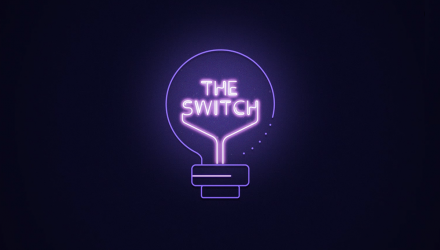Season four of “The Switch” is focused on how innovation performs in times of market turmoil. For the first episode of this season, host Ren Leggi, client portfolio manager for ARK, is joined by ETF Trends’ CEO Tom Lydon and CIO Dave Nadig to begin rethinking asset allocation.
The conversation kicks off discussing the concerns that advisors increasingly have over the traditional 60/40 portfolio allocation. Leggi discusses the breakdown on the 60 side of a 60/40 portfolio that is moored in equities and therefore subject to the risk of disruption from innovation.
Investors are building their allocations based on metrics looking at past performance, and Leggi argues that it may not be a very successful approach over more extended time periods.
“We need something that is going to look at and provide exposure to these innovation platforms that we think will actually create a tremendous amount of value and wealth creation over the next five, ten years,” Leggi says.
Nadig explains that investors who are altering the 60/40 allocations and investing heavier into equities because of concerns about bond performance are often doing it broadly instead of in a targeted manner that would replace the space that the bond investment took.
As innovation doesn’t fit in any singular style box but instead stretches across many, Leggi argues that it should have its own style box. It’s an approach that investors are increasingly beginning to recognize as a viable, strategic investment style.
“It’s beyond growth; this is the future,” Leggi says. “We look at it as an all-cap, global exposure to innovation.”
In rising rate environments, investors are worried more about their fixed income yields, and while they are turning to equity investing more often, there is generalized concern over investing in sectors that have greater volatility, such as tech. ARK invests in innovation over longer time horizons and seeks to take advantage of the short-term spaces that volatility creates regarding innovation.
“When you look at that longer-term time horizon, we see that these opportunities outweigh that potential risk,” Leggi says and explains that innovation carries a lot of long-term growth potential.
Investing in the Future With Innovation
ARK has been looking at the effects of sliding a 5–15% sleeve of innovation into a global portfolio that covers U.S. markets, developed international markets, and emerging markets and found that it brought a diversification that the portfolio didn’t previously have and it had higher risk-adjusted returns.
“Over a longer-term period, [innovation investment] actually dampened volatility, and it also dampened the max drawdown,” Leggi says. The study was done both before and after the pandemic began, and findings were very similar despite very different market conditions.
Lydon mentions that most investments in the previous decade have been closely correlated to the S&P 500 that generally is driven by a handful of top performers. In market-cap weighted indexes, they dominate performance, but performance has been based on previous success and doesn’t necessarily equate to future performance.
Leggi explains that this is where innovation fits in, for investors looking to the future and the innovation and disruptions that will drive companies going forward. ARK has updated its estimates, now expecting that the innovation platforms it invests in, including artificial intelligence, DNA sequencing, and blockchain, will be worth over $100 trillion by 2030.
“I just don’t think investors have enough exposure to those large opportunities because those indices don’t have those underlying stocks incorporated in them… because of that market cap-weighted bias,” Leggi believes.
For more episodes, check out The Switch video playlist.
For more news, information, and strategy, visit the Disruptive Technology Channel.

